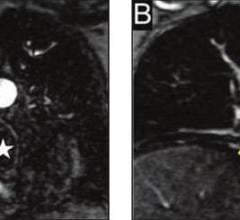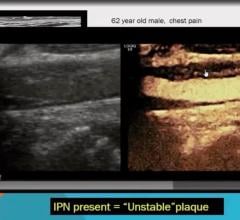
This case is a routine coronary CTA with the focus on the coronary arteries. The patient was a middle-aged male with a family history of coronary artery disease, moderate risk profile and atypical chest pain. The EKG did not indicate myocardial ischemia and there was no enzyme leak. The referring physician was considering invasive angiography to definitely exclude coronary artery disease as the cause of the atypical chest pain. Due to concerns regarding the invasiveness of the procedure and a relatively low likelihood that coronary artery disease was present, a cardiac gated 64-slice coronary MDCT angiogram was performed instead.
The contrast injection protocol in this study is tailored to opacify the coronary arteries during the MDCT acquisition and to wash out the right atrium and ventricle with a saline chaser bolus.
The latter is desired for two reasons. First, if contrast were to remain in the right heart during acquisition, streak artifact may result in image degradation, potentially decreasing the evaluability of the mid-RCA. The streak artifact occurs because of the mixing of relatively dense contrast containing blood from the superior vena cava with in-flowing, non-opacified blood from the inferior vena cava. Secondly, if contrast material is located in the right heart during the scan acquisition, it obviously cannot contribute to the opacification of the coronary arteries — the structures of interest. A higher contrast volume at a higher rate, therefore, would be necessary to achieve the same opacification as in a patient with washed out right heart and optimal contrast timing.
Because the image quality in this case is excellent and the negative predictive value of coronary CTA in research studies is typically between 95 and 100 percent, it could be established that in this patient the chest symptoms were unrelated to coronary artery disease. The patient was spared the invasive angiogram.


 August 17, 2023
August 17, 2023 







